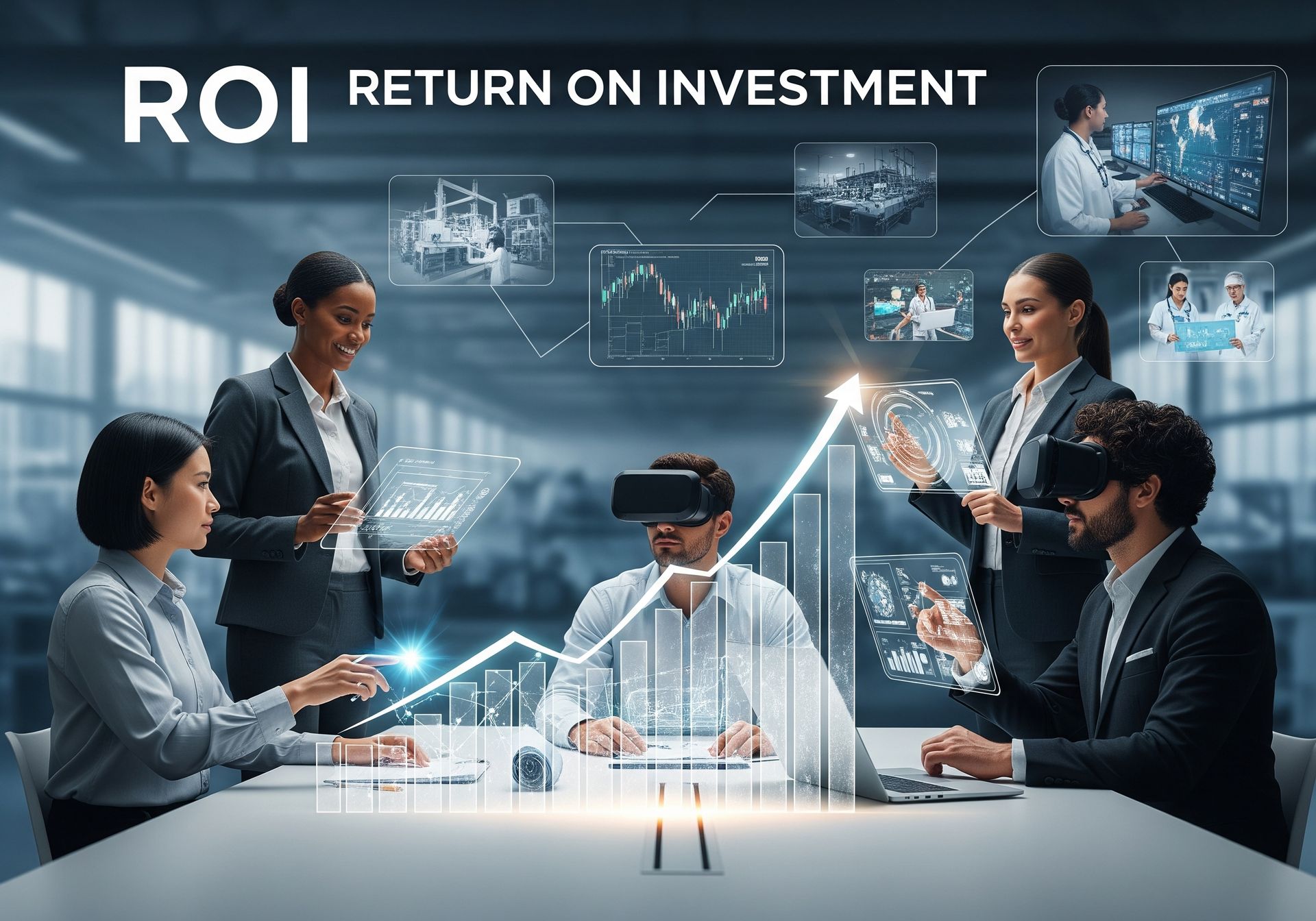Introduction:
In today's competitive global market, American corporations are under constant pressure to optimize training budgets while maximizing employee performance. Immersive learning technologies – Augmented Reality (AR), Virtual Reality (VR), and Mixed Reality (MR) – offer a compelling solution. Beyond the "wow" factor, these technologies deliver a significant Return on Investment (ROI) by transforming how skills are acquired, retained, and applied across the US workforce.
What is the ROI of Immersive Learning?
The ROI of immersive learning refers to the measurable financial and operational benefits a company gains from investing in XR-powered training solutions. This goes beyond just cost savings, encompassing improvements in productivity, safety, employee confidence, retention, and time to proficiency. For US corporations, a strong ROI means a more competitive, agile, and skilled workforce.
Key Drivers of ROI in Immersive Learning:
- Reduced Training Costs:
- Direct Impact: Eliminates the need for expensive physical training facilities, specialized equipment, materials, and travel costs.
- Example for US Corps: A major US airline saved millions annually by switching to VR for de-icing training, eliminating fluid waste and cutting travel expenses (Delta Air Lines case study cited by ArborXR). PwC found that for 3,000 learners, VR training could be 52% cheaper than classroom sessions over three years.
- Accelerated Time to Competence:
- Direct Impact: Immersive, hands-on practice leads to faster skill acquisition and mastery.
- Example for US Corps: Walmart famously reduced training times by 96% (from 8 hours to 15 minutes) for new equipment rollout using VR. Companies report a 52% improvement in time to competence with immersive learning solutions (Immerse VR).
- Improved Performance & Reduced Errors:
- Direct Impact: Practicing in realistic, risk-free simulations drastically lowers the incidence of costly errors and accidents in real-world operations.
- Example for US Corps: Companies implementing VR training have seen a 70% reduction in workplace injuries (Pixo VR cited by Sustainable Manufacturing Expo). Boeing cut maintenance time by 25% with VR.
- Enhanced Employee Engagement & Retention:
- Direct Impact: Highly engaging XR experiences lead to greater job satisfaction, higher training completion rates, and better knowledge retention.
- Example for US Corps: PwC research indicates VR learners are 3.75x more emotionally connected and 4x more focused than classroom learners. Bank of America reported 97% confidence levels in applying VR-learned knowledge among trainees.
- Scalability & Consistency:
- Direct Impact: Once developed, immersive modules can be deployed globally to thousands of employees simultaneously, ensuring consistent, high-quality training regardless of location. This is crucial for large US corporations with distributed workforces.
- Better Decision-Making in High-Stakes Scenarios:
- Direct Impact: Simulating critical situations allows employees to refine decision-making skills under pressure without real-world consequences.
- Example for US Corps: Energy companies can train power plant operators on emergency procedures, or public safety agencies can practice complex incident responses in a safe virtual environment.
Calculating Your ROI for Immersive Learning:
To understand the specific ROI for your American corporation, consider factors like:
- Direct cost savings (travel, facilities, materials).
- Indirect cost savings (reduced errors, less downtime).
- Productivity gains (faster onboarding, higher efficiency).
- Employee retention improvements.
- Risk mitigation (avoided accidents, safety compliance).
- Improved quality control.
Conclusion:
For US corporations seeking a competitive edge, immersive learning technologies are no longer a luxury but a strategic necessity. By addressing key pain points in traditional training – from high costs and inconsistency to lack of engagement and real-world application – XR solutions deliver a tangible and impressive ROI, fostering a more skilled, confident, and resilient American workforce. Investing in immersive learning is investing directly in your company's future success.

